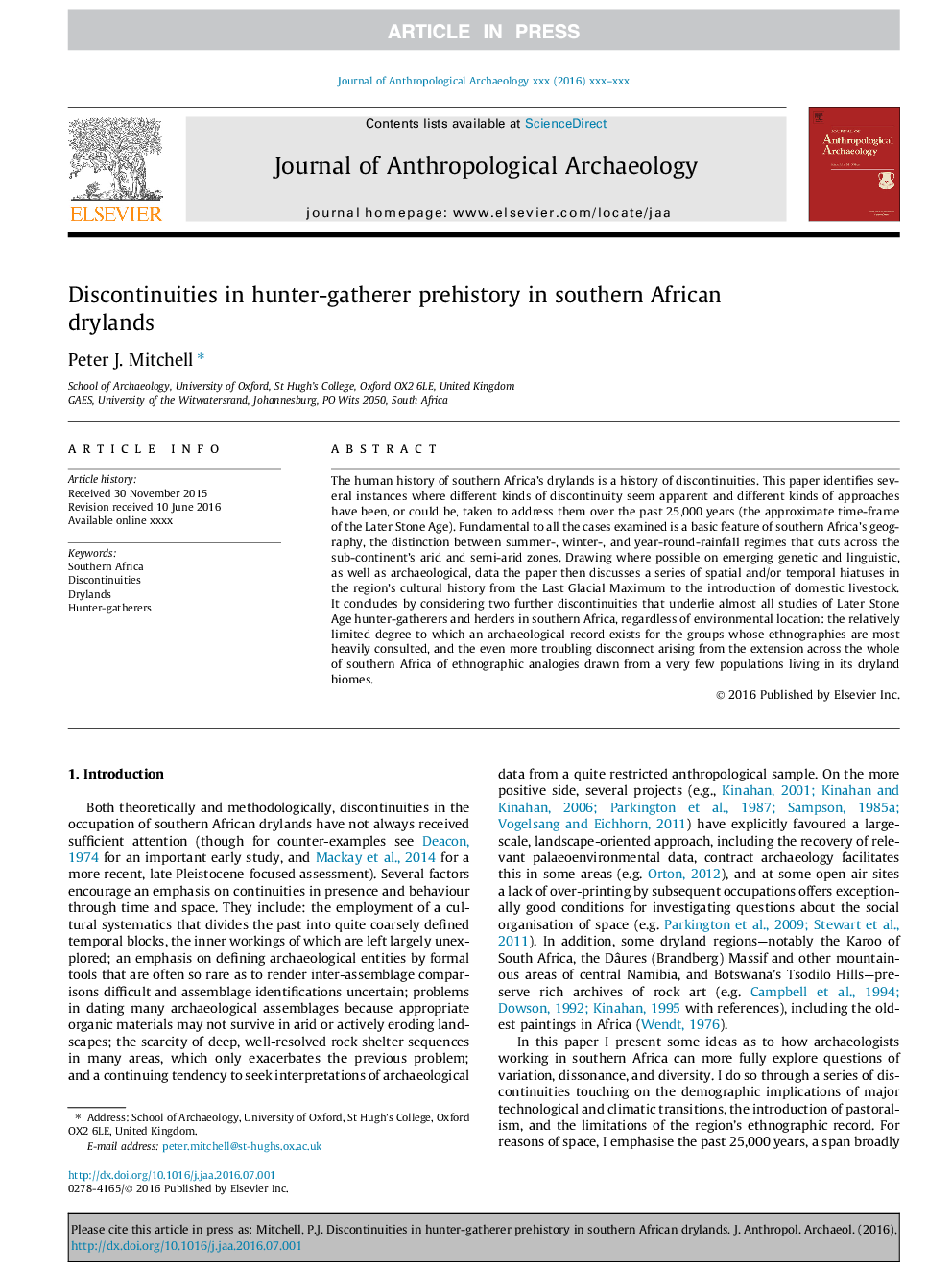| Article ID | Journal | Published Year | Pages | File Type |
|---|---|---|---|---|
| 5111947 | Journal of Anthropological Archaeology | 2017 | 13 Pages |
Abstract
The human history of southern Africa's drylands is a history of discontinuities. This paper identifies several instances where different kinds of discontinuity seem apparent and different kinds of approaches have been, or could be, taken to address them over the past 25,000Â years (the approximate time-frame of the Later Stone Age). Fundamental to all the cases examined is a basic feature of southern Africa's geography, the distinction between summer-, winter-, and year-round-rainfall regimes that cuts across the sub-continent's arid and semi-arid zones. Drawing where possible on emerging genetic and linguistic, as well as archaeological, data the paper then discusses a series of spatial and/or temporal hiatuses in the region's cultural history from the Last Glacial Maximum to the introduction of domestic livestock. It concludes by considering two further discontinuities that underlie almost all studies of Later Stone Age hunter-gatherers and herders in southern Africa, regardless of environmental location: the relatively limited degree to which an archaeological record exists for the groups whose ethnographies are most heavily consulted, and the even more troubling disconnect arising from the extension across the whole of southern Africa of ethnographic analogies drawn from a very few populations living in its dryland biomes.
Related Topics
Social Sciences and Humanities
Arts and Humanities
History
Authors
Peter J. Mitchell,
